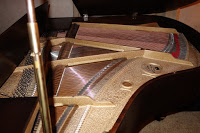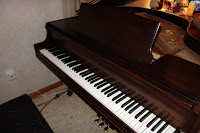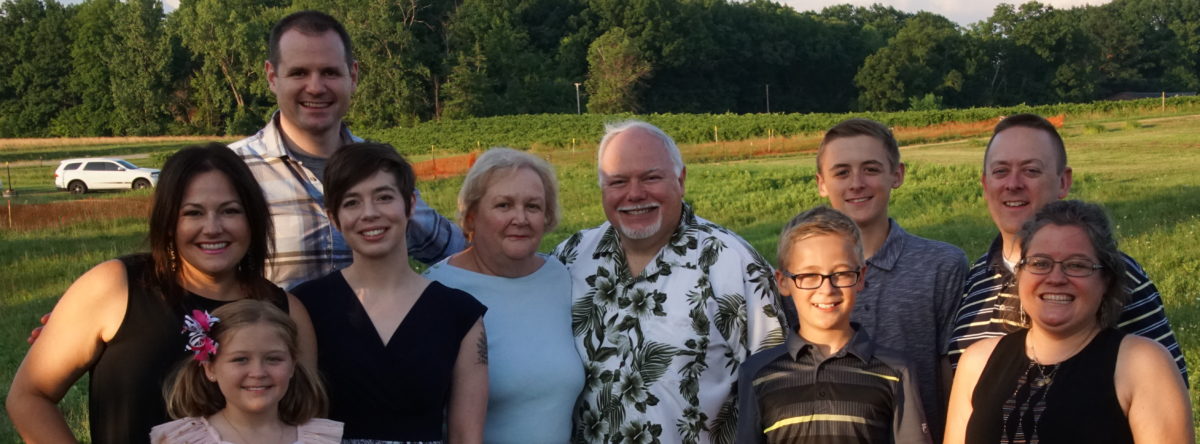I’ll take a few moments here to write a brief account of the NEA Delegate Mass that we held in Chicago on July 3. A fair number of my music colleagues have expressed some curiosity about this annual liturgy. A few years ago I blogged about the 2008 NEA Delegate Mass in Washington, DC, and an article based on that blog appeared in The Liturgical Singer, an NPM publication for cantors.
NEA’s Annual Meeting is an eight-day gathering of leaders from the largest professional association in the United States, and it incorporates a four-day meeting of NEA’s governing body, the Representative Assembly. The RA is the largest deliberative body in the world, with between 8,000 and 10,000 elected delegates.
The four RA days are grueling: state caucuses begin at 7:00 AM, and the RA meets from 10 AM to about 6 PM each day. The RA meets right through Independence Day (and holds its own celebration during the assembly) and whatever Sunday falls within the four days scheduled for its meeting.
Obviously, this schedule creates problems for those who wish to hold Sunday worship. For decades, some delegates have gathered for Mass and an interdenominational prayer service. Since 1996, I’ve been the music minister for the delegate Mass.
Thanks to the connections of a long-time delegate who is a lay Dominican, our celebrants have included a number of Dominican priests. They have included film director Dominic DeLay, composer James Marchionda, now-archbishop DeNoia, and Emiliano Zapata, a former president of an NEA local in Texas. This year’s celebrant was Father Richard LaPata, a former principal of Fenwick HS in Oak Park, Illinois.
The delegate Mass has a number of unique challenges.
- We never know just when the Mass will start. NEA provides us a room in the convention center, but only after the RA has adjourned for the day. Delegates have to hoof it there quickly, and this year we started the entrance hymn while they were still arriving. At this Mass, the “processional” is frequently for the congregation, not the priest.
- The time available for Mass is limited by the transportation schedule. NEA uses a system of chartered buses to transport delegates back and forth between the convention center and their hotels. Those shuttles run only for a limited time, and cabs are expensive, so the Mass needs to be “expeditious” while also being reverent.
- The room is frequently arranged however it was left by the last session. We can usually set an altar up on a speaker’s platform, but typically delegates sit at tables for the Mass. This year we had a unique configuration: round tables–no aisles!
- We were fortunate this year that NEA had left directions for the microphone and speakers to be left on..
Other than that, what is the Mass like? Most members of this annual congregation say that it is very moving. We do our best to make it like other Masses.
- We have a cadre of Eucharistic ministers from all over the country. Usually the first six who arrive are the ones who distribute Communion.
- Similarly, the first several lectors who arrive are put to work with copies of the readings for the day. This year’s Mass was the 14th Sunday of Ordinary Time, and that’s about where the NEA delegate Mass typically falls in the liturgical calendar.
- We never have any problem finding a hospitality and ushering ministry: these people are educators, and they’re used to taking over their space, whether it’s a classroom, bus, library, or in this case, makeshift chapel. Collections are put into whatever convention bags we can commandeer.
- I’ve scheduled pretty similar music for the past few years: entrance hymn “Here I Am, Lord,” “I Am the Bread of Life” and/or “Pan de Vida” for Communion, and “America, the Beautiful” for the recessional.
- When the convention is driveable, as it was this year, I bring my electronic keyboard and associated gear; when I have to fly to the convention city, I lead with just my voice.
- We have a worship aid.
- We have an emailing list to provide announcements and updates.
We typically have a congregation of a few hundred for this Mass, and delegates report that they look forward to it each year. We’ll be in DC again next year, and my guess is that we’ll be celebrating again in a room at the Washington Convention Center on Sunday, July 1.
 Today, piano technician George Knotek finished work on our new-old piano.
Today, piano technician George Knotek finished work on our new-old piano. This is a Wurlitzer baby grand made in 1934. At 4’6″, it’s the smallest grand I’ve played, but
This is a Wurlitzer baby grand made in 1934. At 4’6″, it’s the smallest grand I’ve played, but
